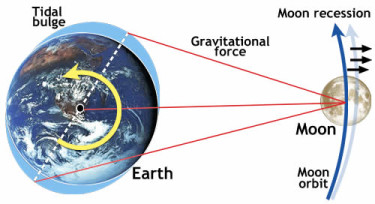June 30, 2015, 7:59:59 = 8:00:00
On June 30, 2015, at 7:59:59pm EDT, the clocks moved forward by one second, instantly. We added a leap second to our common clocks, based on the earth’s rotation around the sun, to re-align them with the real time as determined by the cycle, or vibration time, of the caesium-133 atom. Who cares you might say? Read on to learn the implications of such a small event.

For most of us, in our daily lives this means nothing. We will not even notice; we will not adjust the seconds on our watches. For some, there are important implications. Without this periodic adjustment aircraft, satellite and other complex equipment would slowly but steadily get out of sync. But there are even larger implications.
The earth’s rotation around the sun varies due to events on earth like tsunami’s, earthquakes, changes in polar ice caps, anything that affects the centre of gravity of the planet. This changes our inertia which affects the speed of rotation – the length of a day, and the speed of movement around the sun – the length of a year. Likewise impacts from large meteors can have such an effect. But the largest effect is the force the moon exerts on the earth due to the gravitational attraction of the earth and the moon to each other. This force causes our ocean tides. This force has been in effect as long as the earth and moon have existed. This force is causing the earth’s rotation to slow down, year after year. It is also causing the moon to move farther and father away from the earth each year. In fact it is about 4cm per year. Thus our days are getting longer, year after year. This is why we add leap seconds, we never remove them. We have added 25 seconds to our day since 1972.
Let us consider the long term effect of tides for a moment. If the earth is slowing then going back into the past the earth must have been rotating faster. Going farther back it was even faster. The moon was also closer in the past, since it is slowly moving away. Combining these two facts we see the ancient earth rotated very fast and had huge tidal forces from the moon. Calculations show that the moon would have been touching the earth about 1.3 billion years ago. About 1 billion years ago tides would have been over a kilometre high. The forces would have ripped the planet apart.
Those who believe in evolution claim the earth is about 4.5 billion years old. Thus the earth existed for 3.2 billion years without a moon. Life supposedly started to evolve about 2 billion years ago. The global destruction caused by the early moon, 1 billion years ago up to recently, does not allow time for life to evolve. On the other hand, if the universe were a mere 6,000 years old, then the moon would have only been 24 kilometres closer to the earth at the beginning of time. The tidal effects would be minimal and we could have a beautiful earth, as we see around us today. 2 drastically divergent ideas. One matches reality as we see it, one does not. Ponder that as you remember the loss of one second last night.
Credits: Answer In Genesis: answersingenesis.org; British Broadcasting Company, Science news: bbc.com; Astronomy Magazine: astronomy.com


Recent Comments